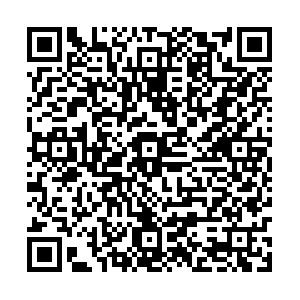RESEARCH ON IMPACT FORCE OF HIGH-VOLTAGE DISCHARGE BASED ON LABORATORY SIMULATION
-
摘要: 为了研究高压放电冲击波的特性, 通过对冲击波的理论分析, 基于自主设计的一套实验装置对实验室条件下模拟高压放电产生的冲击力大小进行了量化试验。利用2.6/50 μs冲击电流发生器模拟产生放电冲击波, 依次改变冲击电流的幅值及离放电球中心位置的距离, 测定水平方向的冲击力大小。实验结果表明: 在25~100 kA冲击电流下, 离放电球中心位置50 mm处水平方向的冲击力大小为1.6~3.3 N; 随着冲击电流的增加以及离放电球中心位置距离的减小, 水平方向的冲击力呈逐渐增加趋势。当离放电球中心位置的距离超过60 mm时, 冲击力的大小受距离的影响较小。所得结论为研究自然界闪电冲击波的特性提供了一定参考依据。Abstract: To study the characteristic of the high-voltage discharge shock wave, the present research conducted theoretical analysis on the shock wave. One test device was set up to simulate and measure the high-voltage discharge impact force under laboratory conditions. The present research used the 2.6/50 impulse current generator to make the discharge shock wave. The impulse current and the distance to the center position of the discharge sphere were changed to measure the impact force in the horizontal direction. The conclusions are drawn as follows: When the impulse current is 25~100 kA, and the distance to the center of the discharge sphere is the 50 mm, the impact force in the horizontal direction is about 1.6~3.3 N. When the impulse current increases and the distance to the center of the discharge sphere decreases, the impact force in the horizontal direction tends to increase. When the distance to the center of the discharge sphere exceeds 60 mm, impact force change caused by distance becomes small. The conclusion may provide reference for the study of the characteristics of natural lightning shock wave.
-
Key words:
- shock wave /
- high-voltage discharge /
- overpressure /
- impulse current
-
表 1 玻璃球在玻璃管中的滚动距离(mm)
序号 冲击电流幅值 25 30 35 40 45 50 55 60 65 70 75 80 85 90 95 100 1 53 102 146 210 266 308 322 313 336 352 370 420 496 563 587 617 2 66 113 139 199 241 278 290 330 317 346 370 466 507 522 568 578 3 62 108 152 205 246 289 304 311 330 338 335 482 487 534 607 649 平均值 60.3 107.7 145.7 204.7 251.0 291.7 305.3 318.0 327.7 345.3 358.3 456.0 496.7 539.7 587.3 614.7 表 2 玻璃球在玻璃管中的初速度(m/s)
序号 冲击电流幅值 25 30 35 40 45 50 55 60 65 70 75 80 85 90 95 100 1 0.08 0.095 0.087 0.084 0.098 0.093 0.103 0.106 0.119 0.131 0.141 0.132 0.143 0.155 0.146 0.145 2 0.091 0.105 0.081 0.098 0.103 0.116 0.091 0.116 0.112 0.136 0.146 0.145 0.147 0.142 0.149 0.178 3 0.077 0.097 0.093 0.101 0.112 0.100 0.098 0.128 0.122 0.126 0.123 0.144 0.137 0.145 0.155 0.164 平均值 0.082 0.099 0.087 0.095 0.105 0.103 0.097 0.117 0.118 0.131 0.137 0.140 0.142 0.147 0.150 0.162 表 3 玻璃球在玻璃管中的移动时间(s)
序号 冲击电流幅值 25 30 35 40 45 50 55 60 65 70 75 80 85 90 95 100 1 1.33 2.14 3.35 4.98 5.43 6.6 6.28 5.89 5.63 5.38 5.24 6.37 6.94 7.28 8.04 8.5 2 1.45 2.16 3.43 4.07 4.67 4.8 6.37 5.67 5.68 5.09 5.08 6.43 6.92 7.34 7.64 6.5 3 1.62 2.22 3.28 4.04 4.38 5.8 6.23 4.86 5.40 5.37 5.44 6.70 7.13 7.38 7.82 7.9 表 4 冲击力的数值大小/N
序号 冲击电流幅值 25 30 35 40 45 50 55 60 65 70 75 80 85 90 95 100 1 1.626 1.945 1.778 1.72 1.999 1.904 2.092 2.168 2.435 2.669 2.881 2.69 2.916 3.155 2.979 2.962 2 1.857 2.134 1.653 1.995 2.106 2.363 1.857 2.375 2.277 2.773 2.972 2.957 2.989 2.902 3.033 3.628 3 1.561 1.985 1.891 2.07 2.292 2.033 1.991 2.611 2.493 2.568 2.513 2.935 2.787 2.952 3.167 3.352 平均值 1.681 2.021 1.774 1.929 2.132 2.100 1.980 2.385 2.402 2.670 2.788 2.861 2.897 3.003 3.060 3.314 -
[1] 陈渭民. 雷电学原理[M]. 北京: 气象出版社, 2003: 305-306. [2] 李国庆, 康天翼. 闪电冲击波对云滴运动及碰并的影响[J]. 气象学报, 1982, 40(4): 475-482. [3] 童晓. 爆炸场冲击波压力测量及数据处理方法研究[D]. 南京: 南京理工大学, 2015: 81-82. [4] 孔德森, 孟庆辉, 史明臣, 等. 爆炸冲击波在地铁隧道内的传播规律研究[J]. 地下空间与工程学报, 2012, 8(1): 48-55. [5] 王巨丰, 李国栋, 吴东, 等. 爆炸冲击波作用下灭弧防雷间隙熄灭工频电弧的机理及应用[J]. 高电压技术, 2015, 41(9): 3 036-3 041. [6] 王新颖, 王树山, 卢熹, 等. 空中爆炸冲击波对生物目标的超压-冲量准则[J]. 爆炸与冲击, 2018, 38(1): 106-111. [7] 张秀华, 王钧, 赵金友, 等. 室内燃气爆炸冲击波的特性及传播规律[J]. 工程力学, 2014, 31(增刊): 258-263. [8] 沈炎龙, 于力, 栾昆鹏, 等. 表面放电等离子体产生冲击波特性[J]. 强激光与粒子束, 2015, 27(6): 1-5. [9] 李帆. 基于直流辉光放电等离子体原理的高频响压力传感器初探[D]. 中国科学院大学, 2016: 29-40. [10] 李祥超, 周中山, 陈则煌, 等. 闪电放电形成的等离子体流体受力分析[J]. 高电压技术, 2015, 41(6): 2 066-2 070. [11] 王志强, 曹云霄, 邢政伟等. 高压脉冲放电破碎菱镁矿石的实验研究[J]. 电工技术学报, 2019, 34(4): 863-866. [12] 戴栋, 宁文军, 邵涛. 大气压低温等离子体的研究现状与发展趋势[J]. 电工技术学报, 2017, 32(20): 1-6. [13] 高国强, 彭开晟, 董磊等. 电压幅值和频率对表面介质阻挡放电与气动特性的影响[J]. 电工技术学报, 2017, 32(8): 56-59. [14] 汤文辉. 冲击波物理[M]. 北京, 科学出版社, 2011: 108-115. [15] MOTIE T C, KELLY-WINTENBERG K, ROTH J R. An overview of research using the one atmosphere uniform glow discharge plasma(OAU GDP)for sterilization of surface and materials[J]. IEEE Transactions on Plasma Science, 2000, 28(1): 41-45. [16] GEORGHIOU G E, PAPADAKIS A P, MORROW R, et al. Numerical modeling of atmospheric pressure gas discharge leading to plasma production[J]. Journal of Physics D: Applied Physics, 2005, 38(20): 303-328. [17] BOGAERTS A, GIJBELS R. Numerical modeling of gas discharge plasmas for various applications[J]. Vacuum, 2003, 69: 37-52. [18] MANKOWSKI J, DICKENS J, KRISTIANSEN M. High voltage sub-nanosecond breakdown[J]. IEEE Transactions on Plasma Science, 1998, 26(3): 874-881. [19] 王学娟, 袁萍, 岑建勇, 等. 依据光谱研究闪电放电通道的半径及能量传输特性[J]. 物理学报, 2013, 62(10): 1-8. [20] 袁萍, 苏延玲, 樊斌, 等. 正地闪过程放电通道的特征参数[J]. 西北师范大学学报(自然科学版), 2018, 54(3): 22-27. -






 下载:
下载:








 粤公网安备 4401069904700003号
粤公网安备 4401069904700003号